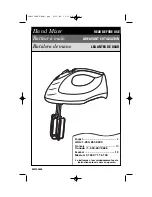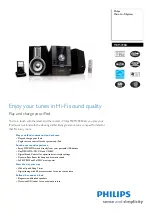
10
1202VLZ4
1202VLZ4
7. Stereo Returns
This is where to connect the outputs of parallel
effects devices (or extra audio sources). These
balanced inputs are similar to the stereo line in [2]
inputs (without EQ, aux sends, pan, mute, and solo).
The circuits will handle stereo or mono, balanced or
unbalanced signals, either instrument level, –10 dBV
or +4 dBu. They can be used with just about any pro
or semipro effects device on the market. The signals
coming into these inputs can be adjusted using the
stereo return [40] knobs before passing onto the
main mix bus, see page 19.
One device: if you have just one parallel effects device
(two cords), use stereo return 1 and leave stereo return
2 unplugged. that way, the unused stereo return 2 level
control can be used to feed stereo return 1 to your stage
monitors, via the return to aux 1 [41] switch.
Mono device: if you have an effects device with a
mono output (one cord), plug that into stereo return 1,
l/mono, and leave stereo return 1, right, unplugged.
This way the signal will be sent to both sides, magically
appearing in the center as a mono signal. This won’t
work with stereo return 2 — you’ll need a Y-cord.
8. Aux Send 1&2
The aux send [31] knobs tap a portion of each
channel's signal to provide an output here to feed
external parallel effects processors or stage monitoring.
See the aux send details on page 15.
These 1⁄4" jacks are balanced outputs capable
of delivering 22 dBu into a 600 ohm balanced or
unbalanced load.
9. Tape In
These RCA jacks are designed to work with semipro
as well as pro recorders. To compensate for typically
low levels, signals coming in here will be automatically
boosted by 6 dB.
Connect your tape recorder’s outputs here, using
standard hi-fi (RCA) cables.
Use these jacks for convenient tape playback of your
mixes. You’ll be able to review a mix and then rewind
and try another pass without repatching or disturbing
the mixer levels. You can also use these jacks with
a portable CD player to feed music to a PA system
between sets.
WARNING:
Engaging both the tape and assign
to main mix buttons in the control room
source [33] matrix can create a feedback
path between tape input and tape output. Make sure
your tape deck is not in record, record-pause, or input
monitor mode, when you engage these switches, or
make sure the control room / submix [34] level knob
is fully counterclockwise (off).
10. Tape Out
These unbalanced RCA connections tap the main
mix output to make simultaneous recording and PA
work more convenient. Connect these to your recorder’s
inputs. (See also main mix [32] on page 16.)
Mono out: If you want to feed a mono signal to your
tape deck or other device, simply use an RCA Y-cord to
combine these outputs. Do not attempt this with any
other outputs on the 1202VLZ4.
11. 1/4" Main Outs
The 1/4" TRS output connectors provide balanced or
unbalanced line-level signals. Connect these to the next
device in the signal chain like an external processor
(compressor/limiter), or directly to the inputs of the
main amplifier. These are the same signal that appears
at the XLR main outputs [13], but 6 dB lower when the
XLR is used balanced.
To connect balanced lines to these inputs, use a 1⁄4"
Tip-Ring-Sleeve (TRS) plug, wired as follows:
Tip = Positive (+ or hot)
Ring = Negative (– or cold)
Sleeve = Shield or ground
To connect unbalanced lines to these inputs, use a
1⁄4" mono (TS) phone plug, wired as follows:
Tip = Positive (+ or hot)
Sleeve = Shield or ground
7
8 9 10 11
12











































